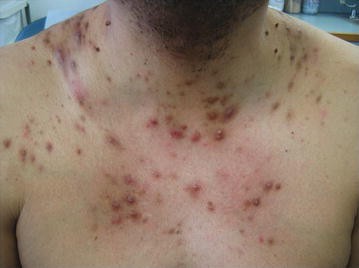
Bleaching cream users risk delayed wound healing, infections – Dermatologists
Dermatologists have cautioned that the use of skin-bleaching products may lead to delayed wound healing, thereby heightening the risk of infections and other health issues.
Experts have pointed out that many bleaching creams and soaps contain harsh chemicals, including hydroquinone, strong steroids, and mercury, which can result in skin thinning, irritation, and long-term damage.
Dr. Ayesha Akinkugbe, an Associate Professor in the Department of Medicine at the College of Medicine, University of Lagos, Idi-Araba, stated that the chemicals present in these products hinder the skin's natural healing process.
She explained that bleaching creams, particularly those with steroid content, can thin the skin, rendering it delicate and slow to recover from cuts or injuries.
"Indeed, these products can significantly impede proper skin healing. The skin loses some of its inherent strength, resulting in prolonged wound closure. Hydroquinone also impacts melanin, which plays a crucial role in protecting and repairing the skin.
"As a consequence, injuries may heal unevenly, leaving scars or dark spots that take considerable time to diminish, a condition known as post-inflammatory hyperpigmentation," she noted.
Dr. Akinkugbe, who also serves as a Consultant Dermatologist at the Lagos University Teaching Hospital, Idi-Araba, elaborated that certain components in bleaching creams obstruct the healing of wounds.
"While steroids may reduce inflammation, which appears advantageous, inflammation is a vital aspect of the healing process. In its absence, the body requires more time to mend cuts and scrapes.
"Hydroquinone can disrupt skin regeneration, resulting in uneven healing. Mercury, often found in illicit skin-lightening products, is harmful to skin cells and impairs the skin's self-repair capabilities," she added.
The dermatologist further emphasized that extended use of these products compromises the skin, making it more susceptible to infections.
"When the skin becomes thinner and weaker, it becomes easier for bacteria and fungi to induce infections."
The skin's primary role is to serve as a protective barrier; however, when this barrier is compromised, even a small cut can lead to infection.
Individuals who regularly use steroid-based bleaching creams over an extended period are at a higher risk for bacterial infections such as impetigo or cellulitis, as well as fungal infections like tinea (ringworm) and yeast infections.
Due to the skin's slower healing process, these infections may persist longer and can result in permanent scarring.
Prolonged use of these products diminishes the skin's natural defenses. The steroids reduce the skin's immune response, creating an environment conducive to the proliferation of bacteria and fungi.
This situation can lead to steroid-induced acne, bacterial infections, or persistent fungal issues. Given the existing damage to the skin, addressing these infections becomes increasingly challenging, as explained by the expert.
Dr. Roli Madubuko, a Consultant Physician and Dermatologist, characterized skin bleaching as a "pandemic" in Nigeria.
She noted that extended use of bleaching agents undermines the skin's capacity to heal from injuries.
Dr. Madubuko, who serves as an Associate Professor of Medicine at the University of Benin in Edo State, elaborated that the thinning of the skin disrupts the healing process.
The skin comprises three layers: the epidermis, dermis, and subcutaneous fatty layer. The dermis contains blood vessels and nerves essential for healing.
Bleaching products, particularly those containing steroids, thin all three layers, leading to epidermal and dermal atrophy, which renders the skin more fragile.
When injuries occur, the healing process becomes significantly more difficult. The blood supply to the skin is compromised, hindering its ability to repair itself.
"We have observed patients who have sustained wounds for months due to their skin's inability to regenerate effectively," she stated.
Dr. Madubuko shared a poignant case to illustrate the risks associated with long-term bleaching.
"I recall a 28-year-old woman who suffered an accident, resulting in a leg fracture and a severe cut on her foot.
"When the medical team attempted to stitch her wound, her skin continued to tear. She had been using bleaching products since the age of 12."
Despite her youth, her skin was so severely damaged that it could not support the stitches. Tragically, she succumbed to sepsis and passed away.
"A young woman lost her life due to a preventable issue like skin bleaching. It is crucial for people to recognize that bleaching causes more harm than benefit. The long-term consequences are catastrophic," she cautioned.





